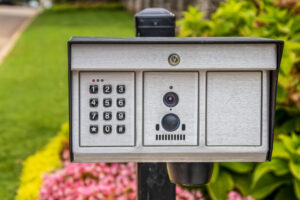
Picket fences are a quintessential symbol of the American dream, evoking images of idyllic suburban life and neighborly charm. These iconic structures not only enhance the aesthetic appeal of a home but also serve practical purposes such as delineating property boundaries and providing security for children and pets. When considering the addition of a picket fence to your home, it is essential to be aware of the various elements that can influence the final cost of the project. From the choice of materials to the complexity of the design, each factor plays a pivotal role in the financial investment required.
Table of Contents
Material Selection
The selection of materials is a critical decision in the planning process and is a major contributor to the overall cost of a picket fence. Wood, the traditional material for picket fences, offers a timeless look and can be found in a variety of species, each with unique properties and price points.
Cedar stands out for its natural beauty and inherent resistance to decay and pests, making it a sought-after, albeit more expensive, option. Pine, on the other hand, is a cost-effective softwood that is widely used due to its affordability, though it may not offer the same longevity as more durable woods. Redwood, prized for its striking appearance and resilience, represents a middle ground in terms of cost when compared to cedar and pine.
For homeowners seeking a more modern and maintenance-free alternative, vinyl and composite materials are excellent choices. These synthetic options mimic the look of wood without the need for regular upkeep, such as painting or staining. While the initial investment may be higher for vinyl or composite, the long-term savings on maintenance can be significant. Leading Edge Fence & Gates, with their extensive experience in the industry, can provide valuable insight into the advantages and drawbacks of each material, assisting you in making a choice that suits both your aesthetic preferences and budgetary constraints.
Fence Size and Design
The dimensions and stylistic details of your picket fence are also significant factors in the cost equation. The total linear footage and the height of the fence are directly proportional to the amount of material needed and the labor involved in construction.
A basic, straightforward design with clean lines is generally more affordable, as it requires less intricate craftsmanship. Conversely, custom designs featuring ornate patterns, curves, and additional decorative elements can substantially increase the cost due to the complexity and additional labor required. The inclusion of gates, particularly those designed for vehicle access, will further contribute to the total expense, as they necessitate additional materials and hardware for proper functionality.
Labor and Installation
The decision between a do-it-yourself installation and hiring professionals can have a significant impact on the cost of your picket fence. While undertaking the project yourself may appear to be a way to save money, it is important to consider the specialized tools, technical knowledge, and time investment that are necessary for a successful installation.
Opting for professional installation by a trusted company like Leading Edge Fence & Gates not only ensures that the fence is constructed correctly but also guarantees compliance with local building codes and regulations. Additionally, professional services typically include a warranty on the workmanship, providing peace of mind and protection for your investment. The geographical location and accessibility of your property can also affect labor costs, as difficult terrain or limited access may pose challenges that require extra labor and equipment.
It is also crucial to account for any permits or fees mandated by your local government, as these can add unexpected costs to the project.
Maintenance and Longevity
The long-term costs associated with maintaining and eventually replacing your picket fence are often overlooked but are important considerations. Different materials demand varying levels of maintenance; for instance, wood fences need periodic staining or painting to preserve their appearance and extend their lifespan.
The anticipated durability of your fence is another factor to consider when evaluating the overall cost. Wood fences may need to be replaced more frequently than their vinyl or composite counterparts, which generally offer a longer service life. Although the initial cost for synthetic materials is higher, their extended lifespan and minimal maintenance requirements can make them a more cost-effective option over time.
Selecting the ideal picket fence for your property requires a thorough understanding of the numerous factors that influence the total cost. Material choices, fence size and design, labor and installation considerations, as well as maintenance and longevity, all play integral roles in shaping the final price.
By comprehensively evaluating these aspects and collaborating with a reputable fencing provider like Leading Edge Fence & Gates, you can make a well-informed decision that aligns with your financial plan and design preferences. Proper planning and budgeting are key to achieving a successful and economically viable picket fence installation.
For those interested in exploring the possibilities of a picket fence for their home, Leading Edge Fence & Gates is available at (302) 892-2575. Contact them to schedule a consultation and obtain a personalized estimate tailored to your specific needs and vision.







